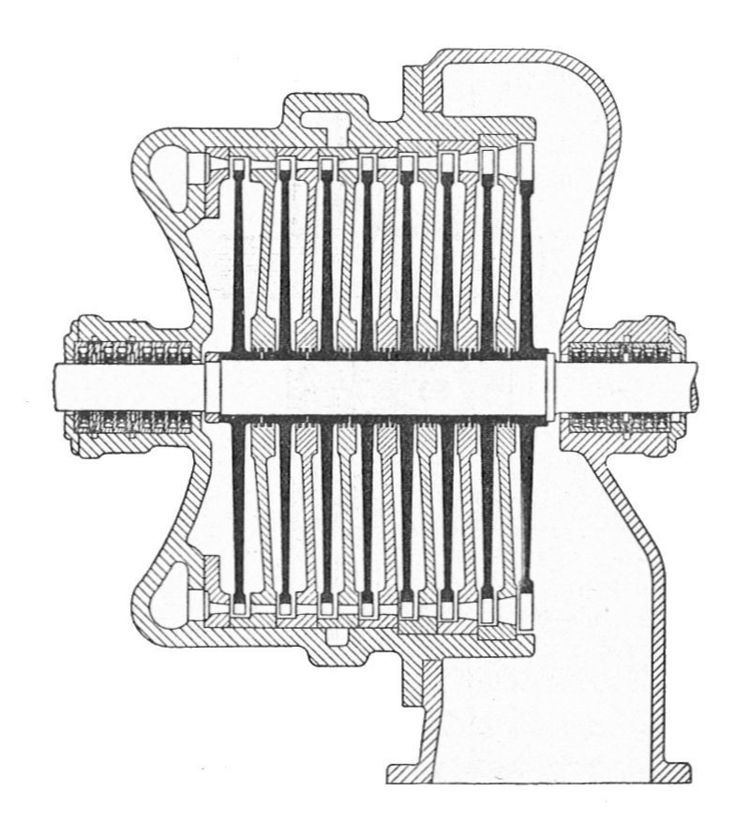 | ||
The Law of the Ellipse, or Stodola's cone law, provides a method for calculating the highly nonlinear dependence of extraction pressures with a flow for multistage turbine with high backpressure, when the turbine nozzles are not choked. It is important in turbine off-design calculations.
Description
We consider a multistage turbine, like in the picture. The design calculation is done for design flow rate (
For off-design calculations, the off-design flow rate is
Stodola established experimentally that the relationship between these three parameters represented in Cartesian coordinate system has the shape of a degenerate quadric surface, the cone directrix being an ellipse. For a constant initial pressure
For very low outlet pressure
Usually, Stodola's cone do not represent absolute flow rates and pressures, but relative to the maximum flow rate and pressures, the maximum values of the diagram having in this case the value of 1. The maximum flow rate has the symbol
If the speed of sound is reached in a stage, the group of stages can be analyzed till that stage, which is the last in the group, the remaining stages forming another group of analysis. This division is imposed by the stage working in limited (choked) mode. The cone is shifted in the
The analytical expression of the flow ratio is:
For condensing turbine the ratio
simplified relationship obtained theoretically by Gustav Flügel (1885–1967).
In the event that the variation of inlet temperature is low, the relationship is simplified:
For condensing turbines
During operation, the above relations allow the assessment of the flow rate depending on the operating pressure of a stage.
